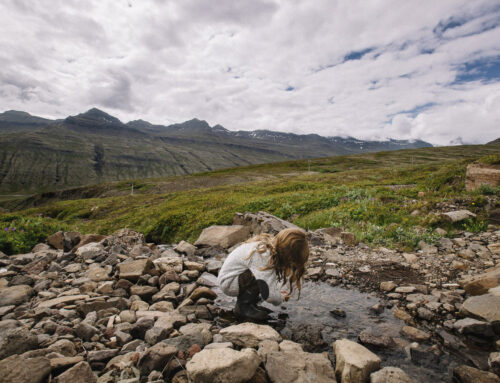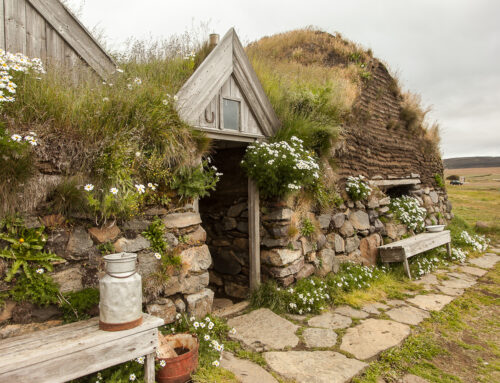If you visit Iceland during summer time it’s almost inevitable that you will see the Icelandic sheep. In fact, you should have your eyes open when you are driving since they might just be standing in the middle of the road. You might notice that the Icelandic sheep is somewhat different from most other sheep. The most obvious thing being their very short tail. It may also surprise many that the rams are not the only ones to have horns. The ewes’ can also have horns but they tend to be smaller than the horns on the rams.
The Norse brought their domestic animal when they found Iceland and they have grown to withstand the Icelandic climate in unique ways. Those included sheep, goats and horses. The Icelandic sheep have for this reason two kinds of wool. The outer layer of long corse hairs protects against the wind and rain. The inner layer of the wool consists of fine dense hairs that provide insolation from the cold. Even though white is the most common color for the sheep it is by far not the only one. In fact, each color has its own name (not simply black and brown).
Icelandic sheep with lambs in spring. But for many, the most curious thing is that even though the sheep run wild in the summertime they are farm animals and that is why the farmers need to collect them from the mountains in the fall. That requires a lot of manpower to walk across all mountains making sure there is no sheep left behind. They even have to cover each area more than once because it is almost inevitable that some sheep escape the first time around. On our Nature and Culture Summer tour, there is a good chance of seeing Icelandic Sheep. And we are more than willing to stop and help you get a good look at them.






